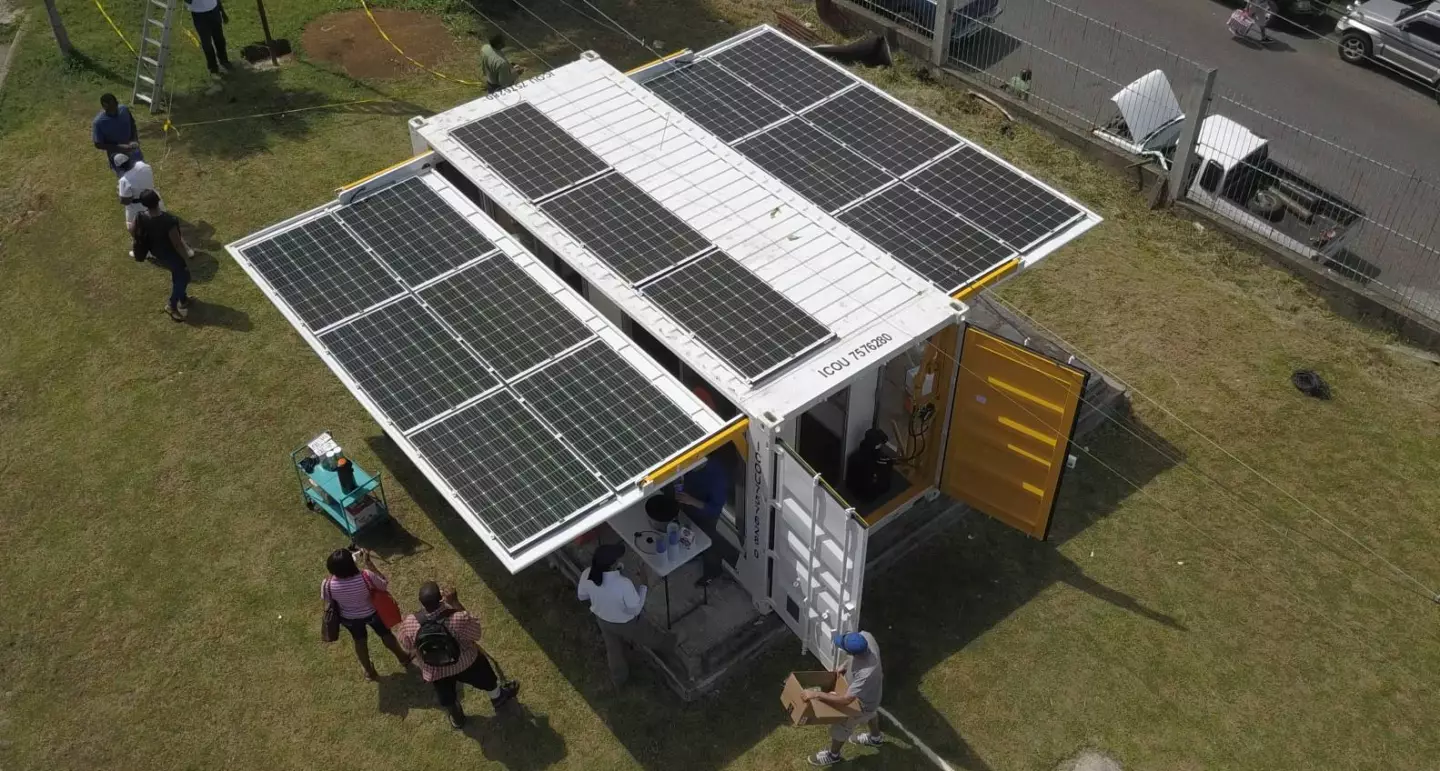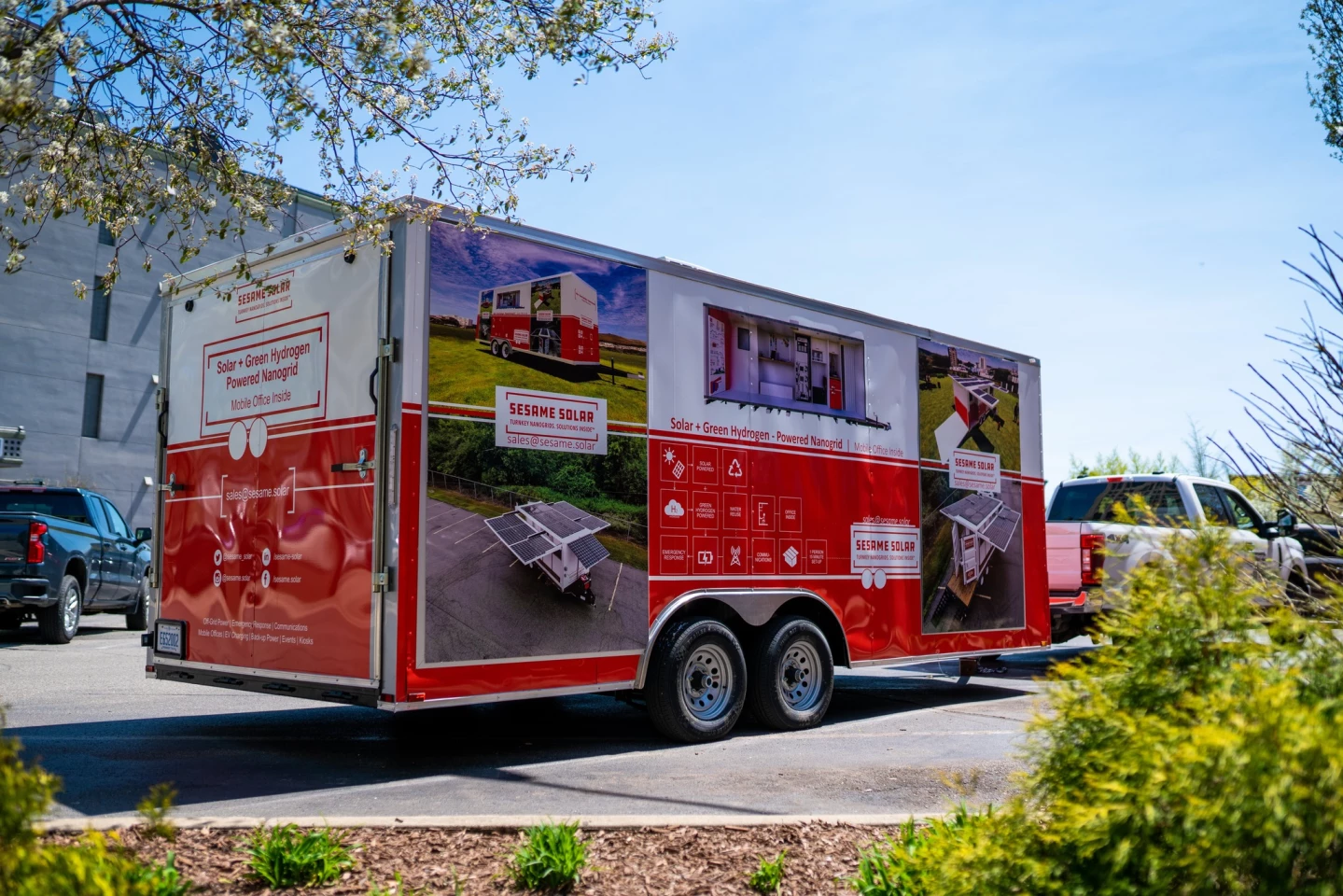Michigan energy systems company Sesame Solar announced this week what it calls the world's first 100-percent renewable mobile nanogrid. Powered by both its wing-like solar panel spread and green hydrogen, the next-generation modular nanogrid gets transported into off-grid emergency zones and goes live in a matter of minutes, delivering weeks of autonomous electricity where it's desperately needed.
Sesame developed the new nanogrid as a cleaner alternative to options powered by fossil fuels. Ranging between 10 and 40 feet (3 and 12 m) long, the Sesame nanogrids are designed to take the shape of either a dual-axle trailer or an ISO shipping container, readily transported via ship, cargo plane, truck, helicopter, train, crane or forklift. In this way, they can transport energy to all kinds of off-grid scenarios, including natural disaster relief, medical response and military operations.
"While we can’t stop hurricanes or wildfires from happening, we can create solutions that help communities recover efficiently without causing further damage to the environment," said Sesame CEO Lauren Flanagan.
Power created via a Sesame nanogrid may be integral toward running emergency medical equipment, operating electric water purification, running connectivity and communications equipment, or charging electric bikes for operation in areas in which roads are impassable to cars and trucks.

Each nanogrid can be equipped with between 15 and 150 kWh of battery capacity and 3 to 20 kW of solar charging. Sesame says that setup takes less than 15 minutes for a single person, and each unit's extensions deploy electronically.
An onboard hydrogen fuel cell works in conjunction with the solar array. Hydrogen gas is created on board via solar-powered electrolyzers that split water into hydrogen and oxygen. The oxygen is vented out and the hydrogen stored in pressurized exterior tanks.
When solar charging isn't enough to keep the onboard battery level from dropping to 35 percent, the hydrogen fuel cell automatically kicks in. Once the batteries are full again, the fuel cell shuts off and the electrolyzers turn back on and create enough hydrogen to fill the tanks. After topping off the hydrogen, the electrolyzers shut off and the solar power gets directed back to charging the batteries. Compact wind turbines can be added as another power generation option.

Along with the power generation, storage and management hardware, each Sesame nanogrid includes a mobile office space inside. The space can be used as a multipurpose base of operations for the response scenario at hand and/or customized into specific layouts, such as a medical clinic, emergency information dissemination outpost, military command center or even a pop-up retail store.
The nanogrids are built robust enough for use in the type of disasters in which they're designed to serve. Sesame says that they can withstand hurricane-strength winds and heavy rains, remaining in operation for 20 years. The solar charging operates in temperatures between 32 and 120 ºF (0 to 49 ºC), while the batteries discharge in a range between -4 and 140 ºF (-20 to 60 ºC).

Sesame has worked with select clients that include the US Air Force, non-profits and telecom companies, deploying the nanogrids for operations including running a medical clinic during Hurricane Maria.
The nanogrids are available to order, and Sesame estimates shipping within 45 business days.
Source: Sesame Solar









